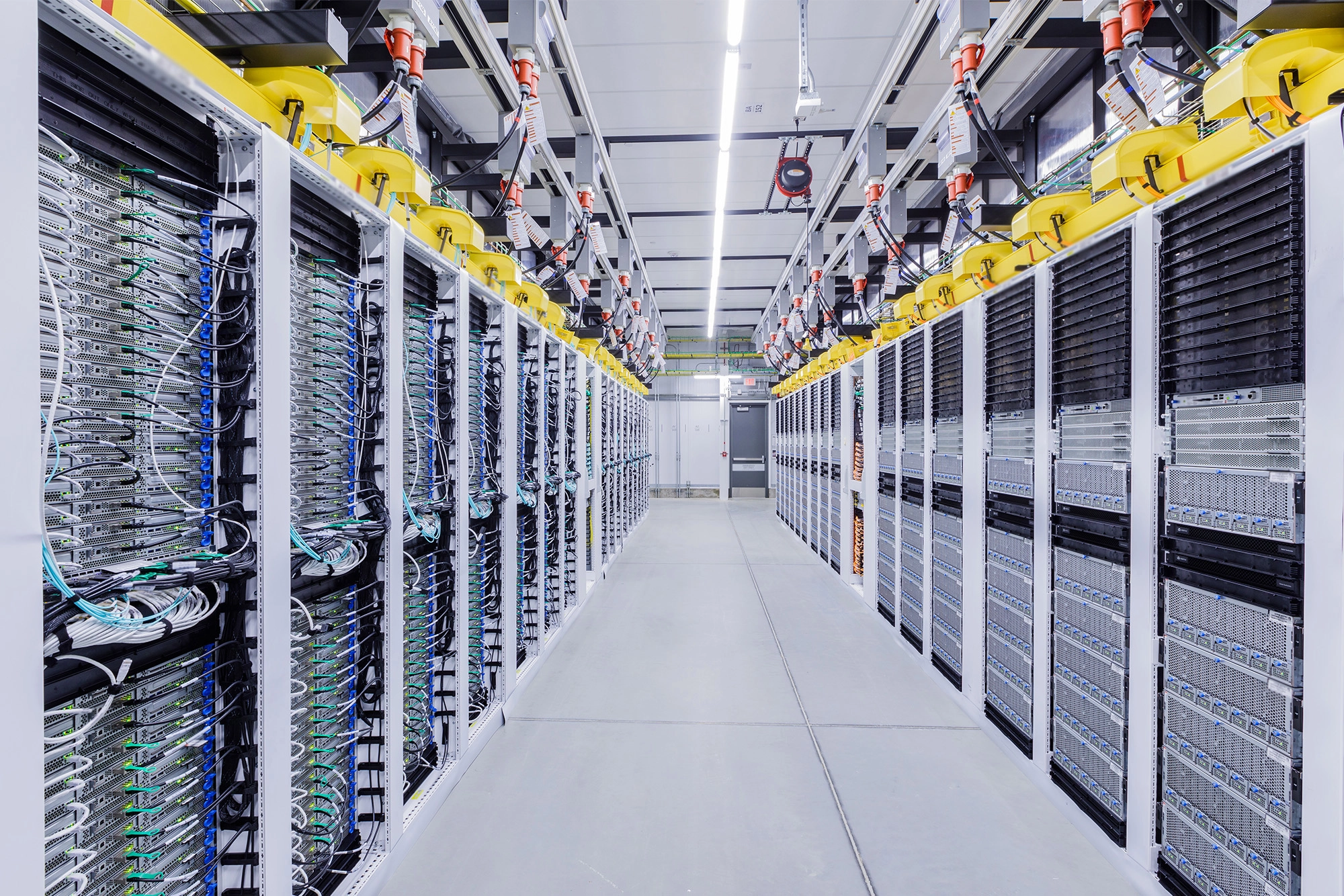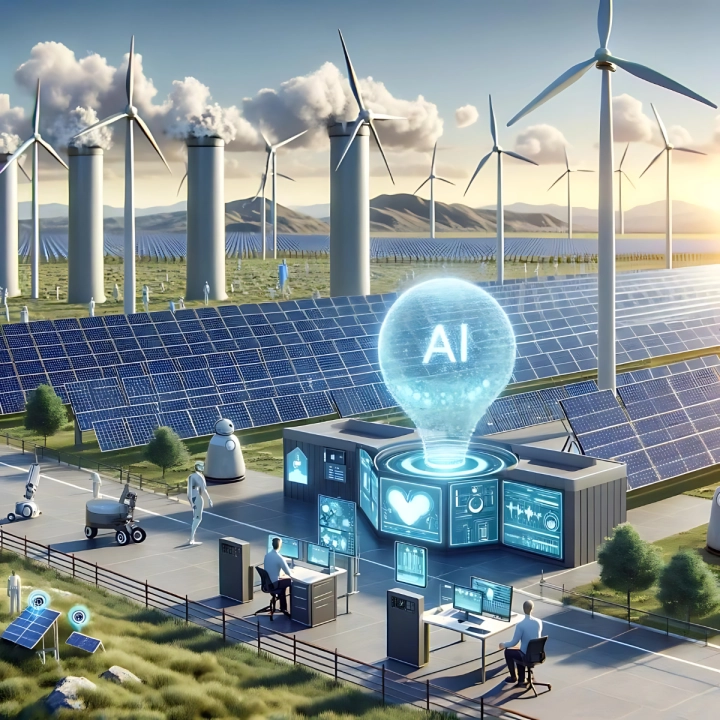
AI’s Hidden Cost: The Unanswered Question of Energy Consumption
As artificial intelligence (AI) reshapes industries, from healthcare to finance and education, its promise of efficiency and innovation is celebrated across the globe. Yet, behind the rapid advancement lies a growing and often overlooked concern:


Despite AI’s transformative potential, the energy it requires to operate remains unquantified and poorly understood. Training large language models, powering data centres, and running real-time AI applications demand vast computational resources, often with significant carbon and hidden costs. But unlike other sectors, there is no standard framework to track or disclose AI-related energy use, leaving researchers, developers, and policymakers in the dark.
This blog unpacks the complex reality of AI’s energy consumption: what we currently know, why it is so difficult to measure, and why this issue urgently matters. For professionals involved in AI development, infrastructure planning, and environmental policy, understanding this hidden cost is essential to building a future where innovation does not come at the planet’s expense.
The Energy Demands of AI: Complex, Growing, and Uneven
Despite the growing popularity of artificial intelligence, its energy demands remain difficult to quantify. Estimates vary widely due to differences in models, infrastructure, and data centre operations. For example, a single AI query can consume over 10 times more energy than a standard Google search, equivalent to keeping a lightbulb on for 20 minutes (Allen Institute for AI, 2024). However, the environmental impact of that same query can differ dramatically depending on where and when it is processed. A request handled in a coal-powered data centre in West Virginia, for instance, could produce nearly double the emissions of one processed in solar-powered California (MIT Technology Review, 2025).


What makes AI particularly energy-intensive is not just its everyday use, but the immense computational power required during the training phase. Training large language models, such as those behind chatbots and voice assistants, demands processing vast datasets over extended periods. A study by the University of Massachusetts Amherst estimated that training a single natural language processing (NLP) model could generate approximately 300,000 kilograms of CO₂ emissions, equivalent to 125 round-trip flights between New York and Shanghai (Dhar, 2020).
Even everyday interactions with AI carry an environmental cost. Recent estimates suggest that each text-based response from ChatGPT may emit around 4.5 grams of CO₂, while image-based queries can result in much higher emissions (Piktochart, 2024). Although these figures are preliminary and based on approximations, they underscore a growing concern: AI’s carbon footprint is both substantial and unmonitored.
AI’s Growing Appetite for Power
AI's surging energy consumption reflects a broader global trend. The International Energy Agency (IEA) projects data centre electricity use will more than double, from 460 TWh in 2022 to over 1,000 TWh by 2026, driven primarily by AI adoption. While there are ongoing innovations aimed at improving energy efficiency, like for example Deepseek’s new generative AI model claiming a 90% reduction in power usage, experts argue that such progress may still fall short of offsetting demand growth.
Additionally, AI’s energy use extends beyond data centres. As it becomes more embedded in everyday life, from optimizing traffic to automating manufacturing, it can indirectly contribute to higher energy consumption in other sectors. As Theo Alves da Costa (NGO Forever) points out, while model training was once the most energy-intensive stage, day-to-day use by millions of users now surpasses it in scale.
Finally, supporting infrastructure, servers, devices, and internet networks, further adds to AI’s carbon impact. A study by Obringer et al. (2023) found that each gigabyte of internet data can generate 28 to 63 grams of CO₂, and even a one-hour video call can emit the equivalent of driving half a mile.
The Hidden Cost of Water Consumption
While AI’s energy consumption often dominates the sustainability conversation, its water footprint is another critical, yet frequently overlooked, environmental cost. Behind every AI interaction lies a resource-intensive cooling process needed to prevent overheating in the data centres powering these technologies. These cooling systems, particularly those using water-based methods, consume staggering volumes of fresh water daily.
According to a 2023 study by the University of California, Riverside, a single conversation with ChatGPT can indirectly consume approximately 500 millilitres of water, approximately the size of a standard plastic water bottle. This estimate accounts for the water used to cool the servers during energy-intensive computations. While this may seem minor on an individual scale, the cumulative effect is enormous.
With the exponential growth of AI applications, projections suggest that by 2027, global water usage linked to AI could range from 4.2 to 6.6 billion cubic meters annually, a volume that surpasses half of the United Kingdom’s total yearly water consumption. This estimate underscores how scaling AI without water-efficient infrastructure could place further strain on already stressed freshwater supplies, especially in drought-prone regions.


Moreover, the environmental impact of water usage varies by geography. In areas where data centres rely on water-intensive cooling systems and local water scarcity is an issue, the ecological footprint is significantly greater. These regional disparities make it critical for companies and policymakers to consider water source sustainability and invest in greener, less resource-dependent cooling technologies.


Conclusion: The Future of AI and Sustainability
As artificial intelligence becomes increasingly embedded in our lives, the challenge ahead lies not only in advancing its capabilities but in aligning its growth with environmental sustainability. The future of AI will be shaped by how effectively we mitigate its ecological footprint, particularly in terms of energy and water usage, while preserving its transformative potential.
One of the first steps toward this goal is building awareness and transparency. Despite the rapid proliferation of AI technologies, there remains a significant knowledge gap regarding their full environmental impact. Current estimates of energy and water use are speculative or vary widely due to limited access to proprietary data. This opacity underscores the urgent need for independent, peer-reviewed research that quantifies AI’s real-world environmental costs across training, deployment, and usage.
Governments, academic institutions, and technology firms all have a role to play. Policymakers could introduce regulations requiring companies to disclose the carbon and water footprints of AI systems, much like emissions reporting standards in other industries. Simultaneously, research funding should prioritize environmental impact assessments of AI, empowering civil society to make informed decisions and hold tech developers accountable.
To support this evidence-based approach, tools like Stata play a crucial role in enabling researchers and analysts to process large-scale data, conduct rigorous econometric modelling, and generate reproducible results.
Meanwhile, the technology sector is beginning to develop strategies aimed at making AI more sustainable. These include:
• Transitioning to renewable energy: Powering data centres with solar, wind, or hydroelectric energy significantly reduces emissions from computation-heavy AI training and operations.
• Developing specialized hardware: Chips like Google’s Tensor Processing Units (TPUs) are designed specifically for AI tasks and can be up to five times more energy efficient than general-purpose processors.
• Advancing edge computing: By processing data closer to the source (rather than relying on centralized servers), energy usage from data transmission can be cut substantially.
• Training smaller, optimized models: Instead of scaling up endlessly, researchers are working on compact algorithms that deliver similar performance with fewer computational demands.
• Improving training efficiency: New techniques allow for faster model convergence, reducing the number of iterations and the data required, eventually cutting energy usage.
• Expanding the use of renewables: In countries like Spain, where over 56% of electricity came from clean sources in 2024 (up from 46% in 2023), companies like Endesa are investing in infrastructure to better integrate intermittent renewables and optimize energy flows.
• Encouraging open-source collaboration: Sharing energy-efficient algorithms, benchmarking tools, and sustainable practices across the global AI community accelerates innovation and reduces duplication of high-energy processes.
These advances suggest that the trajectory of AI does not have to conflict with environmental goals. But progress requires collective action: from developers designing more efficient algorithms, to policymakers enforcing accountability, and end-users advocating for greener technologies. A sustainable AI future depends not just on what we build, but how, and at what cost to the planet.


Francisca Carvalho, Lancaster University
Francisca is a third-year PhD student in Economics at Lancaster University. Her research focuses on climate risk factors and their impact on portfolio returns. She also teaches mathematics, econometrics, macroeconomics and microeconomics, to undergraduate and postgraduate students.
• Casey, C. (2025, May 22). AI’s carbon footprint is bigger than you think. MIT Technology Review. https://www.technologyreview.com/2025/05/22/1117277/ai-energy-three-takeaways/
• Cowls, J., Tsamados, A., Taddeo, M., & Floridi, L. (2021). The AI gambit: Leveraging artificial intelligence to combat climate change—Opportunities, challenges, and recommendations. AI & Society, 38(1). https://doi.org/10.1007/s00146-021-01294-x
• Dhar, P. (2020). The carbon impact of artificial intelligence. Nature Machine Intelligence, 2, 423–425. https://doi.org/10.1038/s42256-020-0219-9
• Endesa. (n.d.). Energy consumption: The hidden cost of artificial intelligence. https://www.scirp.org/journal/paperinformation?paperid=137777
• Heikkilä, M. (2023, December 1). Making an image with generative AI uses as much energy as charging your phone. MIT Technology Review. https://www.technologyreview.com/2023/12/01/1084189/making-an-image-with-generative-ai-uses-as-much-energy-as-charging-your-phone/
• Mustafa, A., Kazmi, M., Khan, H., Qazi, S., & Lodi, S. (2022). Towards a carbon neutral and sustainable campus: Case study of NED University of Engineering and Technology. Sustainability, 14(2), 794. https://doi.org/10.3390/su14020794
• Obringer, R., Rachunok, B., Maia-Silva, D., Arbabzadeh, M., Nateghi, R., & Madani, K. (2021). The overlooked environmental footprint of increasing internet use. Resources, Conservation and Recycling, 167, Article 105389. https://doi.org/10.1016/j.resconrec.2020.105389 5
• Piktochart. (2024). Gen AI’s environmental ledger: A closer look at the carbon footprint of ChatGPT. https://piktochart.com/blog/carbon-footprint-of-chatgpt/
• U.S. Environmental Protection Agency. (2023). Greenhouse gas emissions from a typical passenger vehicle. https://www.epa.gov/greenvehicles/greenhouse-gas-emissions-typical-passenger-vehicle
• Wang, X. T. (2024). The hidden cost of AI: Unveiling and addressing the environmental impact of digital consumption. Open Journal of Social Sciences, 12(11), 676–683. https://doi.org/10.4236/jss.2024.1211046












